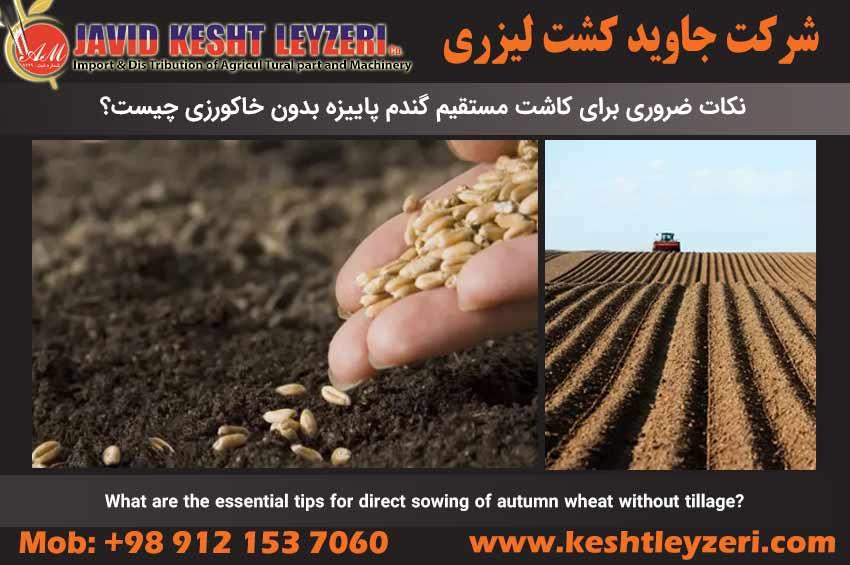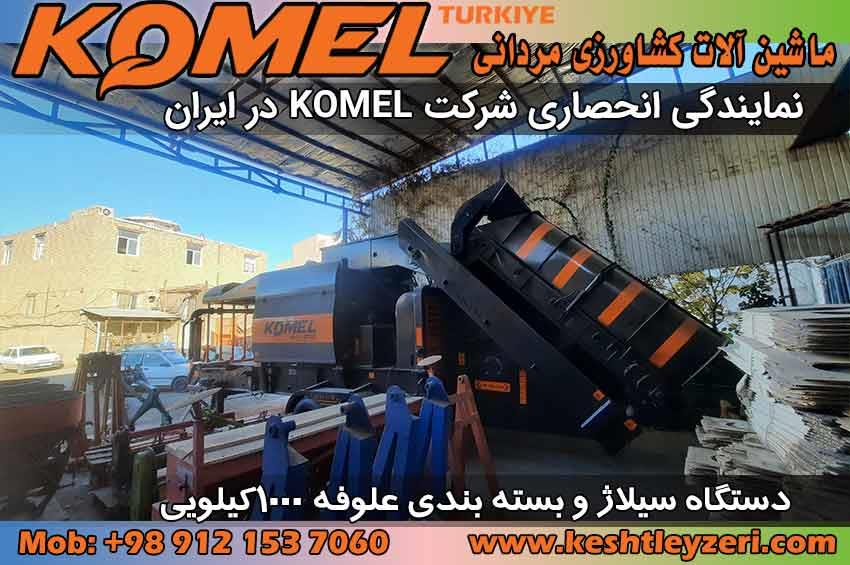
What are the essential tips for direct sowing of autumn wheat without tillage?
javid keshtleyzeri Co.ltd
What are the essential tips for direct sowing of autumn wheat without tillage?
In this section, it is recommended that farmers who decide to sow wheat directly in autumn without tillage should pay attention to the following technical points:
Before making a final decision, make sure that the conditions are right for direct sowing wheat for the time you want. This method allows planting in a wide range of soil moisture conditions, and short autumn rains will not cause a long stop in planting.
Before starting direct planting, have the field inspected by an expert or skilled farmer familiar with this method. The volume remaining from the previous crop and the land leveling condition should be such that it is possible to plant directly with the desired device and irrigation after planting.
If you wish to implement direct seeding of wheat, do not do any residue burning or tillage operations before or after planting. If there is a significant amount of residues and weeds from the previous crop, take appropriate measures to control them.
Before beginning direct seeding, use conventional herbicides such as gramaxone to control weeds, with the approval of local experts.
If you do irrigated farming or operate in rainy areas and you have a forecast of rain right after planting, don't worry about putting fertilizer and seeds together. Many direct seeding machines place fertilizer and seed into the soil at the same time.
The amount of wheat seed should be determined based on the seed variety, planting date, soil type and other factors. Due to the increase in the efficiency of fertilizer consumption in the direct method, the amount of phosphorus and potash fertilizers will usually be used as in the conventional method.
The maximum consumption of alternative fertilizers such as phosphorus and potash should be as much as the conventional method. Due to the fact that the residues are not mixed with the soil in the direct method, sudden changes in the nitrogen ratio of the soil will not occur immediately after planting.
If you need to irrigate due to low soil moisture after the planting operation, protect the unwanted incoming water and preferably cut off the incoming water when the water reaches the end of the field.
In direct sowing of wheat, fertilizer and weed spraying will be carried out in the same way as in the conventional method.
Due to the covering of the soil surface by residues, evaporation from the soil surface has been significantly reduced compared to the conventional method. Before irrigating the fields of direct planting, remove the residues and after ensuring the dryness of the upper layer of the soil, proceed to irrigation. Excessive watering will not only not increase the yield, but may lead to its decrease.
In the end, it is recommended to farmers to visit direct planting fields, increase their knowledge in the technical and practical field of this type of planting, through the use of educational facilities and media, so that they can witness an increase in yield and decrease in production costs and self-sufficiency in Be part of strategic agricultural products.






